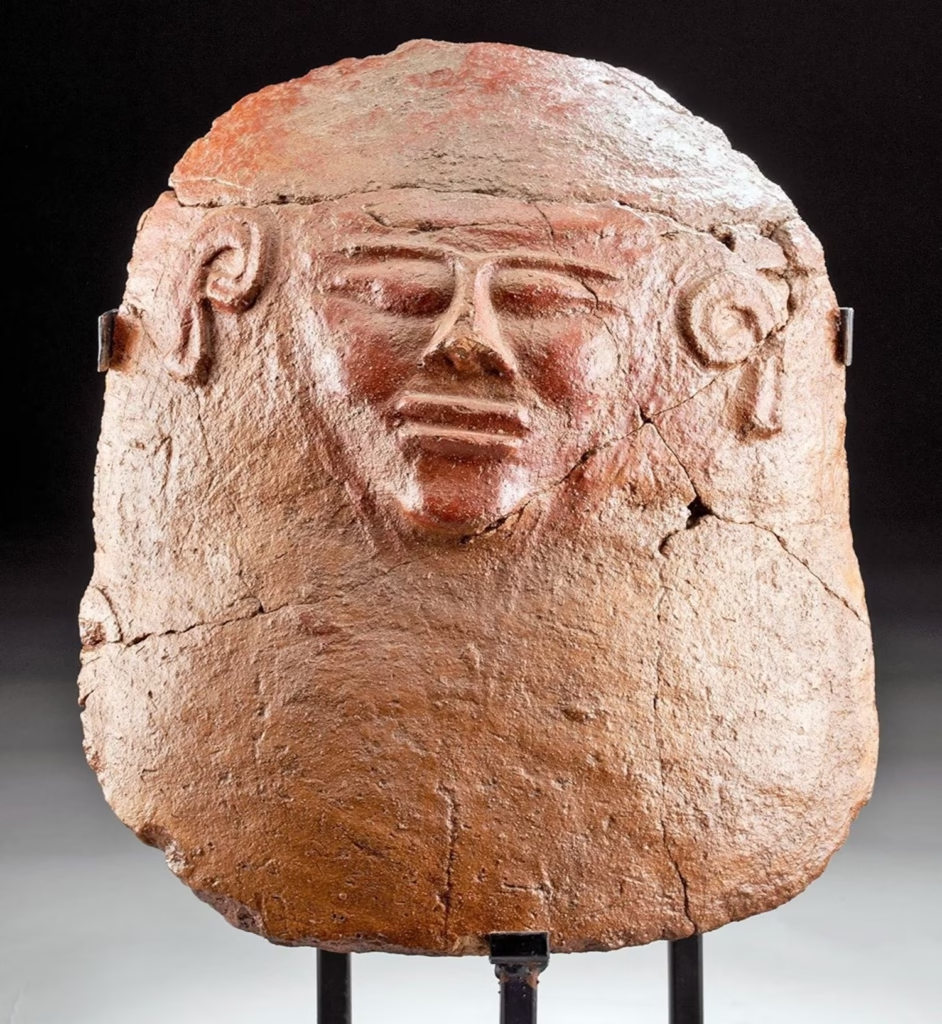In a landmark moment for cultural preservation, Egypt’s Ministry of Tourism and Antiquities announced this week the successful recovery of a rare and valuable collection of smuggled artifacts from the United States. The collection, which includes 25 historical treasures from various periods of ancient Egyptian civilization, was returned to Egypt after a diplomatic effort spanning three years. The artifacts, which were illegally trafficked into the U.S., represent some of the most significant relics from Egypt’s rich cultural heritage.
The treasures, which were officially handed over in Cairo on Monday, include gilded coffin lids from the Pharaonic era, gold funerary masks, and what is believed to be fragments of Queen Hatshepsut’s ancient temple, among other items. These relics, spanning several centuries, include both rare and invaluable pieces that offer a glimpse into the grandeur of ancient Egypt. A portrait of a mummy from Faiyum, Egypt, a gold coin from the reign of Ptolemy I, and jewelry dating back over 2,400 years are just a few of the recovered items. These treasures not only hold immense historical and cultural value but also hold great significance to the Egyptian people as a symbol of their ancient heritage.
The recovery was the result of a coordinated effort between Egypt’s consulate in New York City, the New York District Attorney’s Office, and U.S. security agencies, who worked together to locate and retrieve the items. The operation represents a significant victory in Egypt’s ongoing battle against the illegal trade of cultural artifacts, a trade that continues to plague the country and threaten its invaluable heritage. The Ministry of Tourism and Antiquities in Egypt released a statement on the matter, expressing its gratitude to the U.S. authorities for their assistance and highlighting the importance of collaboration between nations in addressing the global problem of artifact trafficking.
While the specifics of how the artifacts were smuggled out of Egypt remain unclear, officials have emphasized that the recovery is part of a broader, ongoing effort to combat the illicit trade in cultural properties. Over the past few years, Egypt has worked tirelessly to secure the return of stolen treasures, which are often illegally sold on the black market or passed through private collectors who fail to ensure the provenance of their acquisitions. The recent recovery underscores the commitment of both Egypt and the U.S. in taking steps to protect cultural heritage and ensure that artifacts are returned to their rightful owners.
This recent recovery follows a similar effort in 2016 when the U.S. returned a collection of stolen artifacts to Egypt, including a wooden sarcophagus, a mummy shroud, and even a mummified hand. At that time, Sarah R. Saldaña, the director of U.S. Immigration and Customs Enforcement (ICE), spoke about the significance of returning cultural treasures to their country of origin. She noted, “While we recognize that cultural property, art, and antiquities are assigned a dollar value in the marketplace, the cultural and symbolic worth of these Egyptian treasures far surpasses any monetary value to the people of Egypt.” This sentiment reflects a broader understanding that the importance of such items is not measured in monetary terms but in their deep cultural and historical significance.
The recovery of these artifacts is part of a larger, global effort to combat the illicit trade of cultural property, which has been an ongoing issue for many nations. In addition to Egypt, other countries such as India and Italy have seen similar recoveries. In 2016, ICE also returned more than 200 artifacts to India, as well as a stolen copy of Christopher Columbus’ 1493 letter detailing his discoveries in the Americas, which was returned to Italy. These efforts are part of a growing recognition of the need to protect cultural heritage, as the illegal trade of artifacts continues to flourish across the globe.
The trafficking of cultural property is a significant issue for countries with rich historical legacies, as the illegal trade not only robs nations of their heritage but also fuels organized crime. Stolen artifacts are often sold to collectors, museums, and galleries with little regard for their true origins. As a result, the work of law enforcement agencies, museums, and cultural institutions has become increasingly important in tracking and recovering these objects, ensuring that they are returned to the countries to which they belong. The global network of cooperation between countries and organizations is vital in the fight against this ongoing issue.
The recovered artifacts have significant historical value. Among the treasures returned are gilded coffin lids, which provide insight into the burial practices and artistry of ancient Egypt. These coffins would have been used to encase the mummies of the deceased, serving not only as protection but also as a means of preserving the body for the afterlife. The gold funerary masks, typically used to cover the faces of the deceased, are also invaluable, as they help researchers and historians understand the artistry, religious practices, and social hierarchy of the time. Fragments of Queen Hatshepsut’s temple are another key recovery, offering a rare glimpse into the architecture and grandeur of one of Egypt’s most powerful and influential female pharaohs.
The public and international response to these recoveries has been overwhelmingly positive, with many praising the efforts of Egypt’s Ministry of Tourism and Antiquities and the U.S. authorities for their collaboration. These efforts not only bring justice to the country’s cultural heritage but also serve as an example for other nations dealing with similar issues. In an era of heightened global awareness of cultural preservation, the return of these artifacts is seen as a positive step forward in ensuring that history is preserved and protected for future generations.
The recovery of these artifacts is a reminder of the importance of safeguarding cultural heritage. In a world increasingly dominated by global trade and the movement of goods across borders, the theft and illegal sale of cultural property have become all too common. However, the cooperation between countries like Egypt and the U.S. is a testament to what can be achieved when nations come together to protect the cultural legacies of the past. The ongoing work to combat the illegal trade of artifacts is essential to preserving the history and heritage of nations around the world.
As Egypt celebrates the return of these treasured artifacts, the importance of this recovery cannot be overstated. The artifacts not only represent the cultural and historical identity of Egypt but also serve as a symbol of the country’s efforts to reclaim its heritage and ensure its preservation for future generations. The successful return of these items marks a significant milestone in the fight against the illegal trade of cultural property, and it sends a powerful message about the importance of global cooperation in protecting our shared history.


